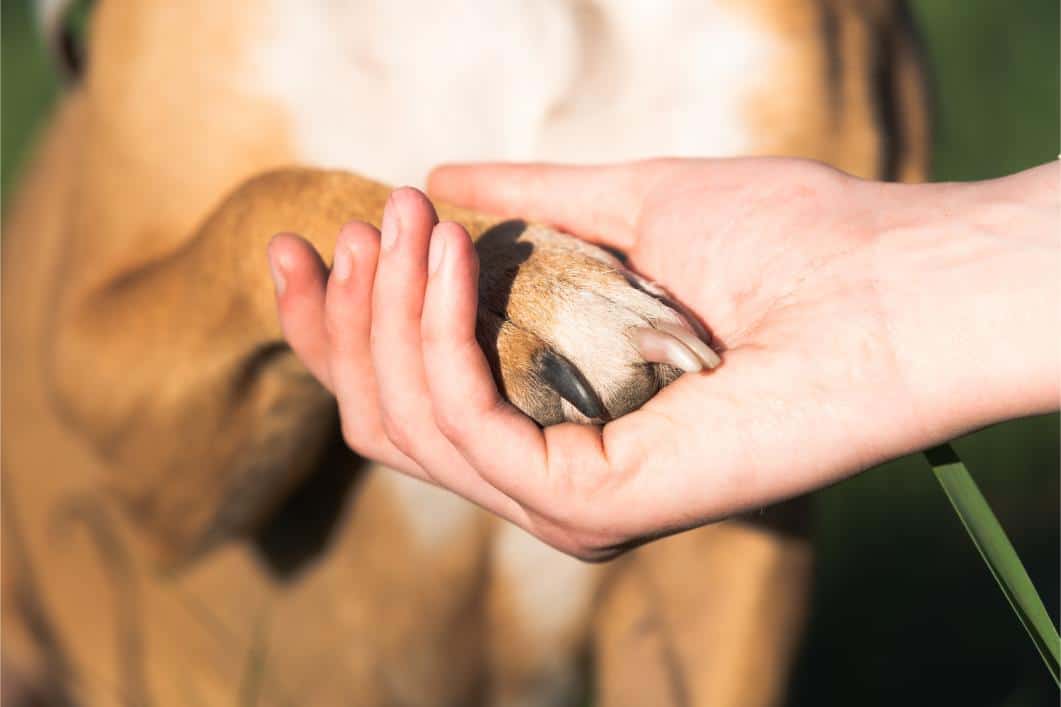Caring For Your Dog’s Paw Pads

Every year dog owners can almost time when their pup’s paws take on a crusty, cracked appearance and texture. After an entire summer of walking around on hot concrete, rocky trails, or coarse, sandy beaches, the otherwise soft, supple skin that comprises the paw pads can become a bit worn. While some wear and tear on the feet is natural, owners can help their dog’s paw pads look and feel their very best.
Year-Round and Seasonal Care
Caring for your dog’s paw pads is necessary throughout the year but is especially crucial during seasons with temperature extremes. Summer heat and winter lows can be incredibly drying to the skin. Which is why tending to paw pad care is so important.
What’s In a Paw?
Your dog’s paws consist of four claws/nails, four digital pads, a metacarpal pad, a dew claw, and a carpal pad. Bones, keratin, muscles, tendons, collagen, tissue, and ligaments add to layers designed to cushion and protect. Sweat glands located on the inner layer of skin help regulate internal body temperature, and enable grip.
Paw pads have pretty obvious functions for the feet. Their ability to absorb shock can also protect areas of the body like joints and other bones from injury.
When Extra Help Is Needed
The ice, snow, and winter chemicals wreak havoc on the outermost layers of the skin. Summer conditions can be equally drying. Plus, with the potential for burns, scrapes, cuts, and more, seasonal care of the paw pads is an essential facet of their regular grooming routine.
- Soak the feet in lukewarm water
- Use a gentle, antiseptic cleanser to remove germs, dirt and debris
- Apply a thick, protective balm to your dog’s paw pads, ensuring it’s safe for pets. Distract your dog with a Lickimat, chew, or other high-value treat during the application.
- Avoid rough surfaces and only walk outside when temperatures are comfortable
- Keep the fur between the paw pads trimmed
- Invest in a good pair of pet booties, and give your dog ample opportunities to accept them
- Place a cone or Elizabethan collar around the neck so they cannot link their paws or remove any balms, wraps, or bandages from the feet (if necessary)
If you notice deep cracks, open sores, bleeding, and other symptoms of pain or discomfort, please call us for an examination. Some diseases, or health challenges like allergies, can affect the health of the skin on the feet and should be ruled out. Additionally, wounds on the feet are slow to heal and highly susceptible to secondary infection.
We Heart Every Dog’s Paws
Taking extra good care of your dog’s feet will have them jumping for joy. They might not immediately recognize your efforts as helpful but once they get used to the time and attention, and how good they feel afterwards, they’ll be more likely to sit for foot rubs.
Please contact us at (732) 387‑7977 with any questions or concerns. We love your dog’s paw pads as much as we love their silly, sweet personality and look forward to helping them in any way we can at Englishtown Vet M.D.
